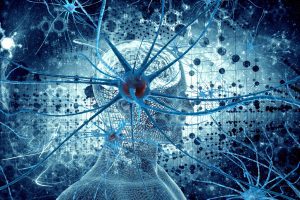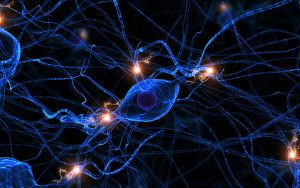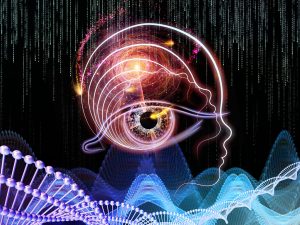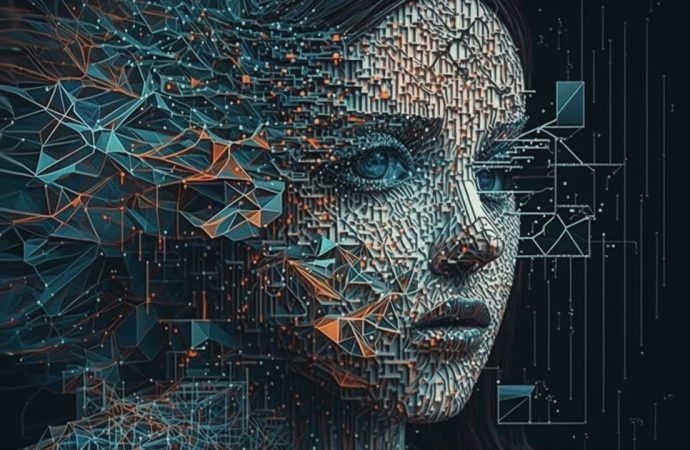Neural networks are at the core of many recent advancements in artificial intelligence, helping to drive innovations across sectors as diverse as medical imaging, recommendation systems, and even astrophysics. The 2024 Nobel Prize in Physics recognized two pioneers of neural network research, John Hopfield and Geoffrey Hinton, underscoring the global significance of neural networks in
Neural networks are at the core of many recent advancements in artificial intelligence, helping to drive innovations across sectors as diverse as medical imaging, recommendation systems, and even astrophysics. The 2024 Nobel Prize in Physics recognized two pioneers of neural network research, John Hopfield and Geoffrey Hinton, underscoring the global significance of neural networks in modern science and technology. In this article, we explore the latest applications and benefits of neural networks, including the roles of foundational models like the Hopfield Network and Boltzmann Machine and cutting-edge technologies such as Graph Neural Networks (GNNs).
Foundational Models and the 2024 Nobel Prize Recognition

Image by Yandex.com
John Hopfield and Geoffrey Hinton’s contributions to neural networks date back to the development of the Hopfield Network and the Boltzmann Machine in the 1980s. The Hopfield Network is a recurrent neural network that introduced the concept of associative memory, allowing networks to store and retrieve information in a manner similar to human memory. Meanwhile, Hinton’s work on the Boltzmann Machine laid the groundwork for unsupervised learning, where a network learns patterns without labeled input. These foundational models paved the way for today’s sophisticated deep learning technologies and have enabled applications such as medical imaging, language processing, and recommendation systems.
1. Applications of Hopfield Networks and Boltzmann Machines Today
The principles behind the Hopfield Network and Boltzmann Machine are still relevant, particularly in systems requiring pattern recognition and memory-based tasks. For instance, Hopfield Networks have been adapted for use in medical imaging, where they help identify and classify intricate patterns in complex data. In fields like genomics, these networks support the analysis of vast datasets, recognizing genetic markers for various diseases.
- Example: In cancer research, pattern recognition models inspired by Hopfield Networks can detect cancerous cells in medical images, significantly improving early diagnosis rates.
- Benefit: Improved accuracy and efficiency in medical diagnostics help reduce patient wait times and increase the probability of successful treatments.
2. Graph Neural Networks (GNNs) and Their Expanding Influence
Graph Neural Networks represent one of the most promising advancements in neural networks. GNNs are designed to process data structured as graphs, which makes them ideal for relational data or any information where connections are significant. Social networks, transportation systems, and recommendation engines are among the many fields benefiting from GNNs.
- Example: Pinterest uses GNNs to enhance its recommendation system, analyzing user connections to offer personalized content. Similarly, Uber Eats leverages GNNs to suggest relevant dining options to users based on preferences and geographical location.
- Benefit: GNNs improve the personalization of recommendations, resulting in higher engagement rates and a better user experience.
3. GraphCast and Advancements in Weather Forecasting
Weather forecasting has long relied on complex models and vast computational power to predict atmospheric changes. Google DeepMind’s GraphCast, a GNN model, revolutionizes this process by making accurate 10-day weather forecasts within seconds, a task that traditionally required hours.
- Example: In emergency preparedness, GraphCast’s speed and accuracy enable authorities to respond more quickly to weather-related disasters, saving lives and resources.
- Benefit: Real-time, accurate weather predictions improve decision-making in sectors like agriculture, disaster response, and transportation, where timely information can have a significant impact.
Graph Neural Networks for Improved Recommendation Systems
Graph Neural Networks (GNNs) have emerged as a revolutionary technology for handling complex relational data, making them incredibly useful in improving recommendation systems. Unlike traditional neural networks, which process data in a structured grid-like fashion, GNNs work directly with graph data structures, where data points (such as users, items, and preferences) are connected by edges. This allows GNNs to understand and predict the relationships between users, products, and other entities within a network.
One of the most notable uses of GNNs is in improving recommendation systems on platforms like Pinterest, Uber Eats, and Amazon. These systems leverage GNNs to analyze relationships between users and items (such as restaurants, products, or media), considering not just individual preferences but also the network of interactions between all users and items. This approach enables more accurate and personalized recommendations by capturing intricate patterns that traditional recommendation algorithms might miss.
For instance, by analyzing user behavior in a graph-based model, GNNs can identify hidden connections between users with similar tastes or predict new user preferences based on their network interactions. This results in more relevant and timely recommendations, driving user engagement and improving overall user satisfaction.
How GraphCast Model Transforms Weather Forecasting
GraphCast is an innovative model developed by Google DeepMind that leverages Graph Neural Networks to dramatically improve weather forecasting. Traditionally, weather forecasting has been a time-consuming process, requiring vast amounts of data and computational resources. GraphCast revolutionizes this by using GNNs to predict weather patterns across large spatial-temporal domains, making it possible to produce accurate 10-day forecasts in a matter of seconds, compared to hours with traditional methods.
GraphCast uses a graph structure to model the relationships between various elements of the atmosphere (such as temperature, pressure, and humidity) across different geographical regions. This allows the model to capture the intricate dependencies between various weather parameters more efficiently than conventional models. The result is a significant reduction in computational time, making weather predictions faster and more scalable, even for remote or under-sampled regions.
Beyond speed, GraphCast also improves the accuracy of weather forecasts, especially for long-term predictions. This capability is particularly useful in fields such as disaster management, agriculture, and transportation, where timely and precise weather information is crucial.
Google DeepMind’s GNoME Model for Material Discovery
Google DeepMind’s GNoME (Graph Neural Network for Materials Engineering) model represents another groundbreaking application of GNNs, this time in the field of material science. The model is designed to accelerate the discovery of new materials by predicting which combinations of atoms will lead to stable and functional materials.
Traditionally, discovering new materials required time-consuming and expensive experiments. Researchers would synthesize materials in laboratories and test their properties, a process that often took years. GNoME, however, uses machine learning techniques to analyze existing material data and predict the properties of new materials before they are physically created. By training the model on a vast dataset of materials, GNoME can predict the stability and performance of novel compounds, significantly reducing the time and cost of discovering useful new materials.
The potential applications of GNoME are vast. In energy storage, for instance, the model could help identify new materials for batteries or fuel cells that are more efficient and cost-effective than current options. Similarly, in the electronics industry, GNoME can help discover new materials for semiconductors or conductors, accelerating the development of faster, more energy-efficient devices.
4. Material Discovery with GNoME Model
Neural networks are also driving advancements in material science. Google DeepMind’s GNoME model, a GNN-based system, identifies stable materials more efficiently than traditional methods. This capability accelerates the discovery of materials for electronics, renewable energy, and construction.
- Example: GNoME has been instrumental in discovering new battery materials that could lead to more efficient and sustainable energy storage solutions.
- Benefit: Faster material discovery processes reduce development costs and bring innovative products to market more quickly, benefiting sectors like electronics and green energy.
5. Neural Networks in Black Hole Visualization

Image by Yandex.com
Neural networks are proving useful in astrophysics, particularly in modeling and visualizing black holes. Scientists use neural networks to simulate the behavior of matter around black holes, providing insights into some of the most mysterious phenomena in the universe.
- Example: In 2023, researchers used neural networks to create a highly detailed simulation of the event horizon around a black hole, helping validate theories about black hole physics.
- Benefit: Improved understanding of black holes and other cosmic phenomena may lead to advancements in fundamental physics and expand our knowledge of the universe.
6. Transportation Optimization with GNNs
GNNs play a crucial role in optimizing transportation networks, such as route planning, traffic prediction, and logistics. Google Maps and other navigation platforms leverage GNNs to process data about road networks and traffic patterns, helping users find efficient routes in real-time.
- Example: Logistics companies use GNNs to predict the best delivery routes, minimizing fuel consumption and delivery times.
- Benefit: Optimized routes lower operational costs and reduce environmental impact, promoting sustainability in the transportation sector.
7. Ethics and Transparency in Neural Networks
As neural networks become more embedded in high-stakes applications, ethical concerns, including transparency, fairness, and accountability, have gained prominence. Techniques to detect and mitigate bias in neural networks are becoming more advanced, particularly in sectors like finance and healthcare, where fairness is essential.
- Example: Financial institutions use bias-detection models within their neural networks to ensure fair lending practices, analyzing patterns for potential discrimination.
- Benefit: Ensuring fairness and transparency in neural network applications fosters trust and prevents unintended harm to vulnerable groups.
Recent Neural Network Advancements
The rapid development of neural networks in 2024 has brought numerous benefits across industries:
Improved Precision in Complex Data Processing:
Neural networks are adept at handling vast datasets, which is crucial in fields like genomics, weather forecasting, and astrophysics. By automating pattern recognition in complex data, neural networks improve accuracy and speed, making previously impractical tasks feasible.
Enhanced Personalization:
GNNs are significantly improving recommendation systems by analyzing relational data, making recommendations more relevant to individual users. This has applications in e-commerce, social media, and content platforms, enhancing user engagement and satisfaction.
Energy Efficiency:
Models like spiking neural networks are designed to mimic the energy-efficient processes of the human brain, making them suitable for low-power devices. This efficiency is critical in applications that require sustainable AI solutions, such as wearable technology and IoT devices.
Accelerated Scientific Discovery:
The integration of GNNs in material discovery, like in the GNoME model, speeds up research in fields like renewable energy and electronics. This enables rapid prototyping and testing of new materials, reducing development costs and accelerating innovation cycles.
Better Resource Management in Transportation:
Neural networks used in logistics and navigation optimize route planning, reduce fuel consumption, and improve overall efficiency. This has a positive impact on operational costs and helps reduce the carbon footprint of transportation services.
Ethical and Fair AI Practices:
The increased focus on bias detection and ethical considerations in neural networks ensures fairer outcomes, especially in sensitive sectors like finance, healthcare, and criminal justice. By addressing these ethical issues, AI applications become more reliable and trustworthy.
Geoffrey Hinton’s Impact on AI and Neural Network Development

Image by Yandex.com
Geoffrey Hinton is widely regarded as one of the most influential figures in the development of artificial intelligence (AI) and neural networks. His pioneering work in the 1980s on backpropagation, a fundamental algorithm for training deep neural networks, laid the groundwork for today’s deep learning models. Hinton’s research helped address the challenges of training multi-layer neural networks, unlocking the potential for these systems to learn complex patterns in vast amounts of data.
In recent years, Hinton’s contributions have gained even more significance. His work on deep learning techniques such as restricted Boltzmann machines (RBMs) and neural networks for unsupervised learning has become foundational to AI advancements in fields like computer vision, natural language processing, and robotics. Hinton’s approach to “deep” architectures, which involve multiple layers of neurons, led to breakthroughs in image recognition technologies, as well as the development of systems that power technologies like voice assistants, self-driving cars, and AI-based healthcare diagnostics.
Furthermore, his role in shaping the field has extended beyond research. Hinton, alongside Yann LeCun and Yoshua Bengio, was awarded the 2018 Turing Award for his groundbreaking work in neural networks. This recognition further cemented his influence in the AI community, especially given the vast applications of his theories in current-day technologies.
Conclusion
The 2024 Nobel Prize recognition of John Hopfield and Geoffrey Hinton highlights the foundational contributions that continue to inspire and shape today’s advancements in neural networks. From pioneering models like the Hopfield Network and Boltzmann Machine to the cutting-edge applications of Graph Neural Networks, neural networks are making a substantial impact in fields as diverse as material science, astrophysics, and transportation. The versatility of neural networks, combined with new ethical standards and energy-efficient designs, positions them as a critical technology for tackling complex problems in an increasingly data-driven world.
Neural networks are not only advancing technical capabilities but also enhancing lives, fostering innovation, and promoting sustainability across numerous sectors. As we move forward, their role in addressing global challenges—from medical diagnostics to climate change—will likely expand, driven by the foundational principles laid down by pioneering researchers and the relentless pursuit of innovation.






















